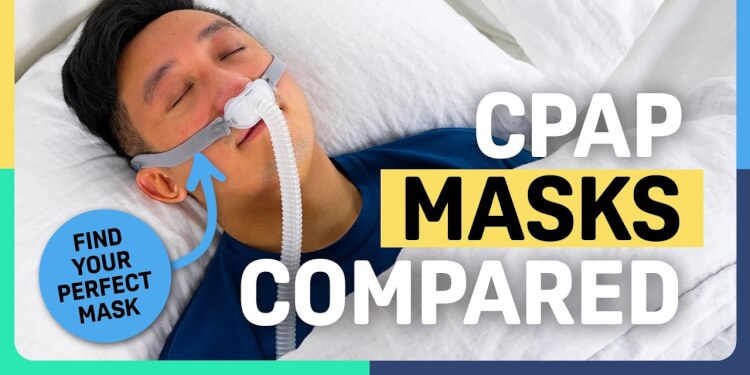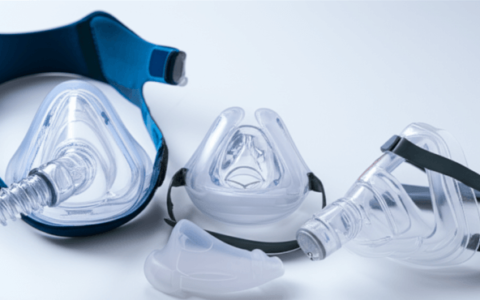The face mask is an essential component of CPAP therapy, and there's a variety of different types of masks to choose from, based on the severity of your sleep, apnea symptoms, sleep positions.
The face mask is an essential component of CPAP therapy, and there's a variety of different types of masks to choose from, based on the severity of your sleep, apnea symptoms, sleep positions, as well as your own personal preferences. We'll walk you through all the things you need to consider when choosing the right CPAP mask for you.
Hey, I'm Bo. CPAP therapy is one of the most effective treatment options for people with obstructive sleep apnea, and while most machines are a good fit for everyone, there are a lot of different types of masks out there.
So make sure you find the design that feels most comfortable for sleep and best for managing your symptoms. This process may take a little trial and error to find the right mask for you, but the good news is that the majority of CPAP machines are designed for use with any type of mask, so no matter what you choose, your machine will have you covered. Let's take a look at five different types of masks.

What You Should Know About CPAP Masks
First, we have the nasal pillow. The nasal pillow is the least invasive type of CPAP mask. These masks only cover your nostrils, leaving your mouth and the rest of your noseuncovered. Nasal pillow masks work by delivering air directly into your nostrils. The mask also features cushions made of silicone or gel that form a seal around both nostrils to maintain air flow and prevent air leaks. These are also a great choice if you prefer sleeping on your side.
Due to its lower profile, the mask won't shift or come loose even if you have your face resting on a pillow. Another great thing about nasal pillow masks is that they are one of the least expensive type of masks, with the average model running between $75 and $150. This mask works best with low pressure settings, so if your CPAP prescription includes high pressure levels, you may need a mask that covers your nose and mouth.
People with allergies may also not find the nasal pillow mask comfortable due to nasal irritation. The next type of mask is a nasal baby mask. This type of mask is similar to the nasal pillow mask, covering only the nostrils and leaving the mouth and rest of the nose exposed.
But the key difference between the two is that a nasal-cradle mask features a cushion that covers both nostrils rather than two cushions for each nostril. These are also a great option for side sleepers, as the ride remains in place even when your head is resting on a pillow. The average nasal squirrel mask costs between $80 and $150, making them a more affordable option.
And similar to the nasal pillow mask, if you have allergies or aprone to nasal irritation, a nasal baby mask may not be comfortable. Nasal-cradle masks are best for low- to moderate pressure settings. If you need high pressure levels for CPAP therapy, you may want to consider another type of mask. Next, we have the standard nasal mask.
This one covers the area between the bridge of your nose and your upper lip. These are the kind of best of both worlds for people who want the strong air delivery of a full face mask and the thin, lightweight profile of a nasal pillow or a nasal-cradle mask. They're a bit bulkier than a nasal pillow and a nasal-cradle mask, but they still cover a limited amount of your face and are comfortable for both side and stomach sleeping. Standard nasal masks are also better equipped for higher pressure levels, but they can cause discomfort if you frequently experience nasal congestion or if you primarily breathe through your mouth.
The Average Full Face Nasal Mask
The costs vary by quality and design, but the average full face nasal mask costs somewhere between $50 to $175. Next, let's look at the standard full face mask. As the name implies, full face masks cover the entire space between the bridge of your nose and the bottom of your mouth.
This creates a seal for delivering air into your nostrils and your throat. Most of these feature headgear consisting of adjustable elastic straps so you can loosen or tighten the straps to ensure a tight seal and a comfortable fit.
Full Face Masks For Back Sleep
While a full face mask is best for back sleeping, we should point out that, in general, sleeping on your back can narrow your throat and worsen symptoms of OSA. If your doctor has not told you to avoid sleeping on your back, then a full face mask may be suitable. Full face masks are ideal for people who need high pressure levels for their CPAP therapy and those who primarily breathe through their mouths.
These masks are also the smallest and bulkiest types of CPAP masks sold today, and some people find the extra coverage claustrophobic or uncomfortable for sleep, and those of you with beards and thick sideburns may also experience irritation with this type of mask.
Full face masks are more on the expensive side, with the average cost around $250. And finally, we have the hybrid full face mask. Unlike the standard full face mask, hybrid masks don't cover the entire nose. The cushion rests between the bottom of your nose and your chin, creating a seal to deliver air into your nostrils and mouth. While a typical hybrid full face mask may cover the bridge of your nose or rest between your nostrils, some have open frames that make wearing glasses more comfortable.
Since the nostrils and mouth are covered, the hybrid full face mask is a good option for CPAP therapy with high pressure levels and for people who primarily breathe through their mouths. While these masks aren't quite as bulky or invasive as full face masks, they may still be uncomfortable for side or stomach sleeping.
People with thick facial hair may also experience uncomfortable tugging. Hybrid full face masks are not as common as the standard full face mask, so you may have a hard time finding a model that works for you.
CPAP Mask – How to Choose a CPAP Mask
If you do prefer this model, expect to pay about $100 to $250. Since a CPAP mask requires a prescription, we recommend you chat with your doctor about which type or types of CPAP mask will work best for you, and to learn more about how to choose a CPAP mask, head over to Sleepfoundation.org.
We'll leave a link in the description below. Now it's really important to keep your mask clean. For our video on how to clean your mask, as well as your machine andhose, check out our video on that right here. That's all for now. Thanks for watching and sweet dreams.
Notice: Internet users spontaneously contributed the article content, and the article views only represent the author himself. This site only provides storage services, does not have ownership, and bears relevant legal liabilities. If you find plagiarism, infringement, or illegal content, please contact the administrator to delete it.



